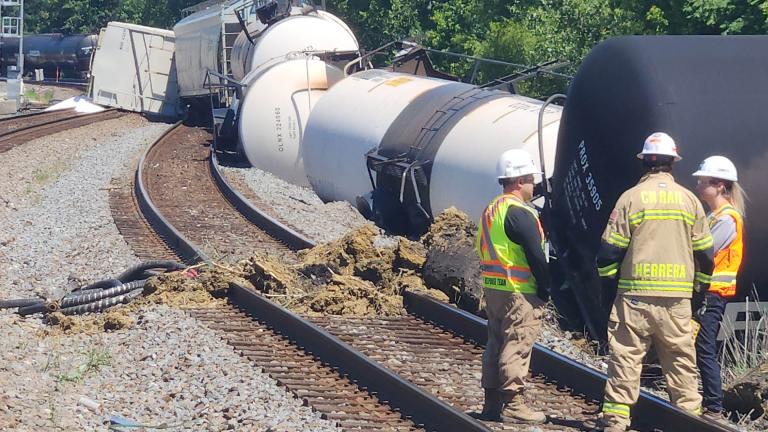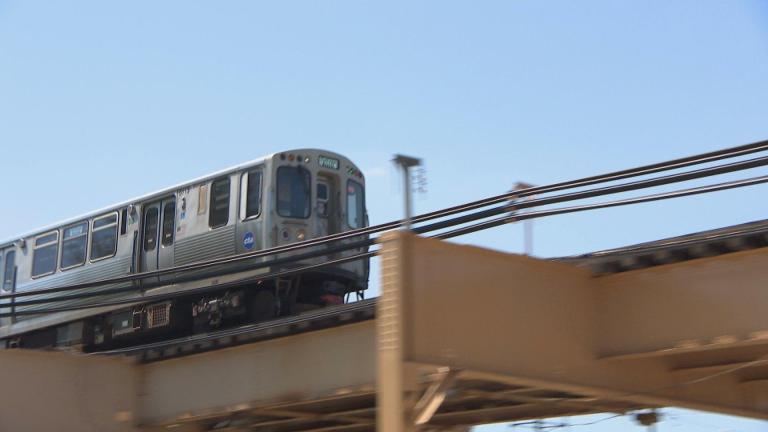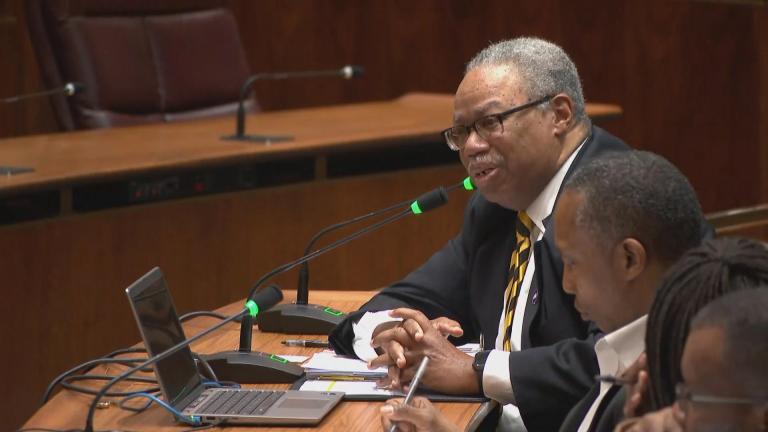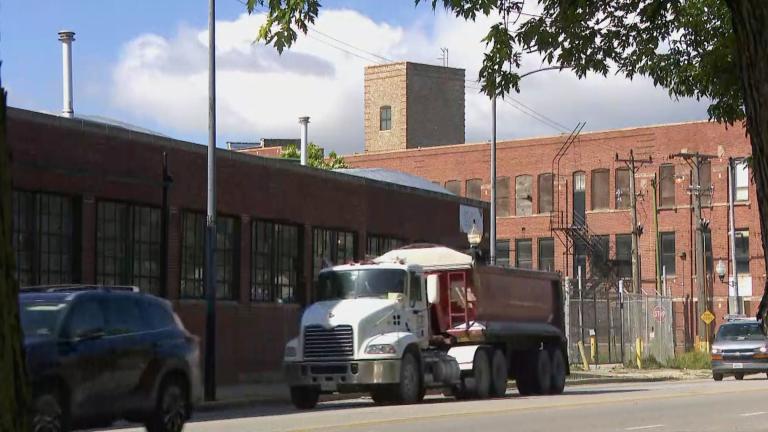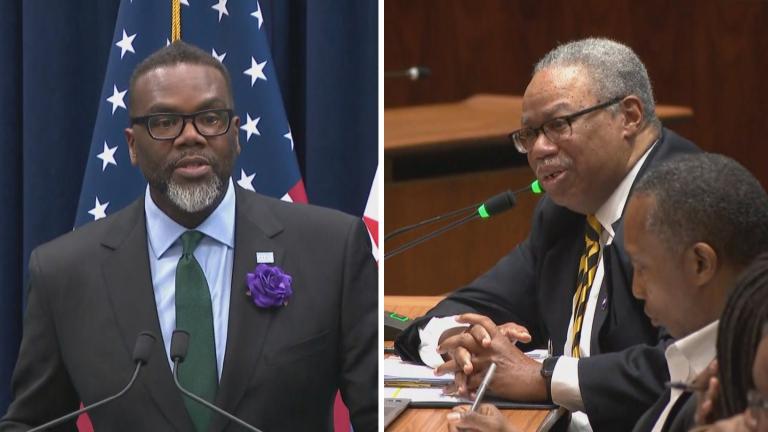North Lake Shore Drive is getting rebuilt; make that redefined. As part of the yearslong Redefine the Drive project, the Illinois and Chicago departments of transportation have been gathering feedback and coming up with potential ways to overhaul the Drive from Grand to Hollywood. They’ve narrowed it down to a few options, and they’re looking for your input ahead of an upcoming public meeting.
Lake Shore Drive is iconic. But with icon status comes aging infrastructure.
“Some up to 80 years old and in need of full replacement,” said Nate Roseberry, assistant chief highway engineer with the Chicago Department of Transportation. “This is the chance for us to … look at some opportunities to really reenvision the area and solve some problems while we rebuild the road.”
Problems not just like crumbling infrastructure, but also safety, and mobility for all kinds of users.
“One of the things we heard, definitely, was improve access to not only North Lake Shore Drive itself, but really to the park, which is an iconic park,” said Steve Schilke, project and environmental studies section chief with the Illinois Department of Transportation.
Based on roadway needs and public input, planners came up with what they’re calling the Essential: lakefront access every quarter mile, grade separation for the lakefront trail where it crosses east-west streets, getting rid of the pesky signal at Chicago Avenue, and reinforcing the shoreline, which has taken a beating of late.
“All the things that we see as critical to install regardless of what alternative we select,” Roseberry said.
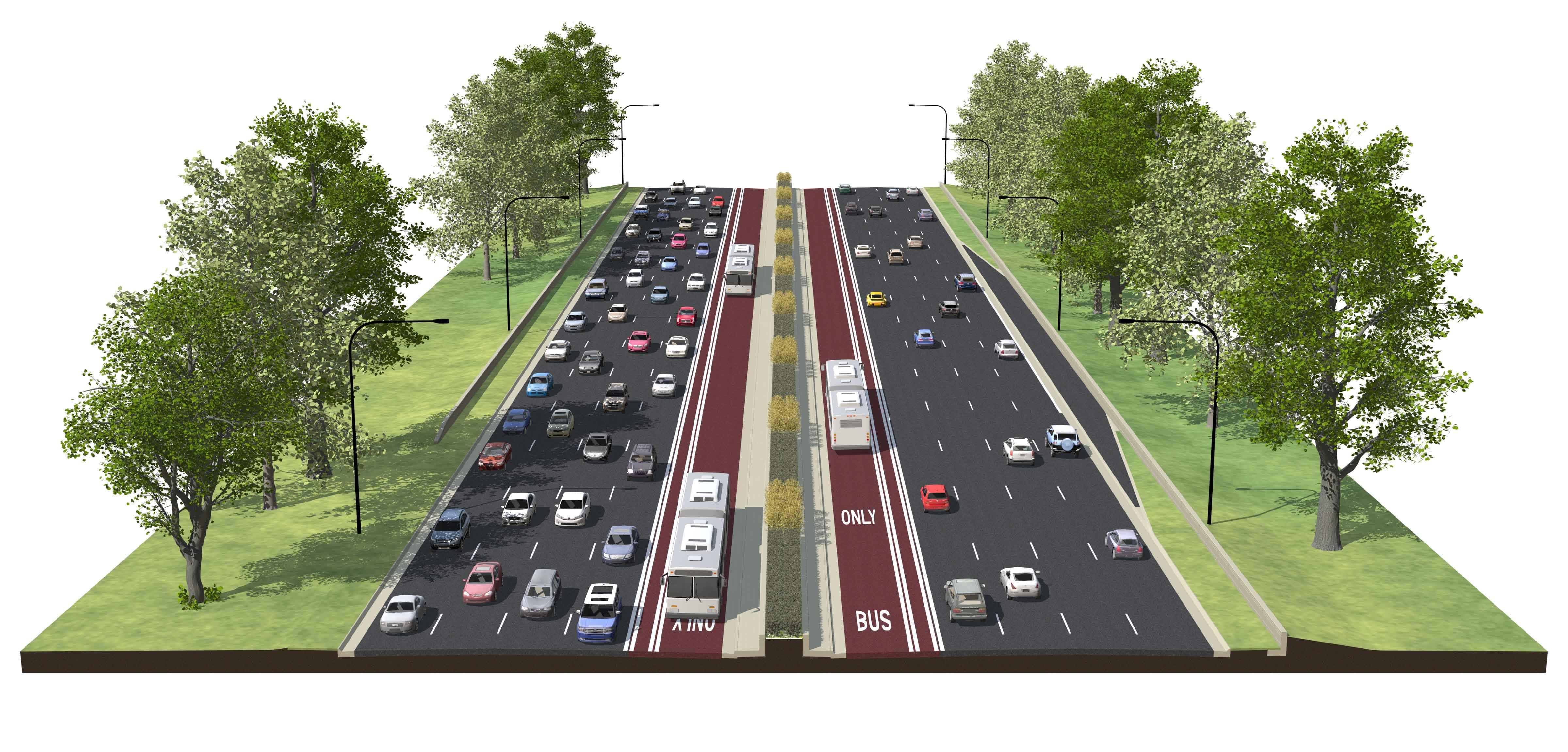 The Addition (Courtesy Redefine the Drive)
The Addition (Courtesy Redefine the Drive)
The alternatives look at improving travel for buses. The Addition would add a fifth lane in the center, just for transit. The Exchange would convert an existing lane for transit, leaving three for general purpose. Planners are also considering the Flex and Double Flex options: creating one or two lanes usable by buses, and by drivers willing to pay a toll.
“How do we improve and how do we further manage the traffic? How do we further improve the reliability of that transit?” Schilke said.
But, as always, a major project like this one has raised concerns about changing the character of the lakefront.
“Lake Shore Drive needs its improvements, but we don’t want to see Lake Shore Drive reconfigured to a point where it becomes an interstate highway,” said Ward Miller of Preservation Chicago. He thinks past renovations, such as near McCormick Place, created a wide, interstate feel. He’s also hesitant about a trenched roadway, like what’s on the table at Chicago Avenue.
“We want to keep that boulevard character to the drive,” Miller said.
Friends of the Parks’ Juanita Irizarry agrees. She’s concerned expanding the Drive could put parks at risk.
“Our preference is that improvements be made to make traffic flow better to improve transit access but not to create more lanes for cars,” Irizarry said. And while she appreciates the project’s eye toward shoreline stability, “we think this project really should be set within a much larger, more comprehensive conversation about our lakefront erosion problem.”
Others think the improvements for transit don’t go far enough. Kyle Lucas of the group Better Streets Chicago says activists had to fight to keep the option that converted a lane for buses only. And he wants planners to think bigger, like bus rapid transit, “shifting transportation closer to the edge of the city, and then creating something that’s similar to an L line at a fraction of the cost.”
Another idea: protected bike lanes in both directions, since Lucas says the lakefront trail isn’t always practical for cyclists.
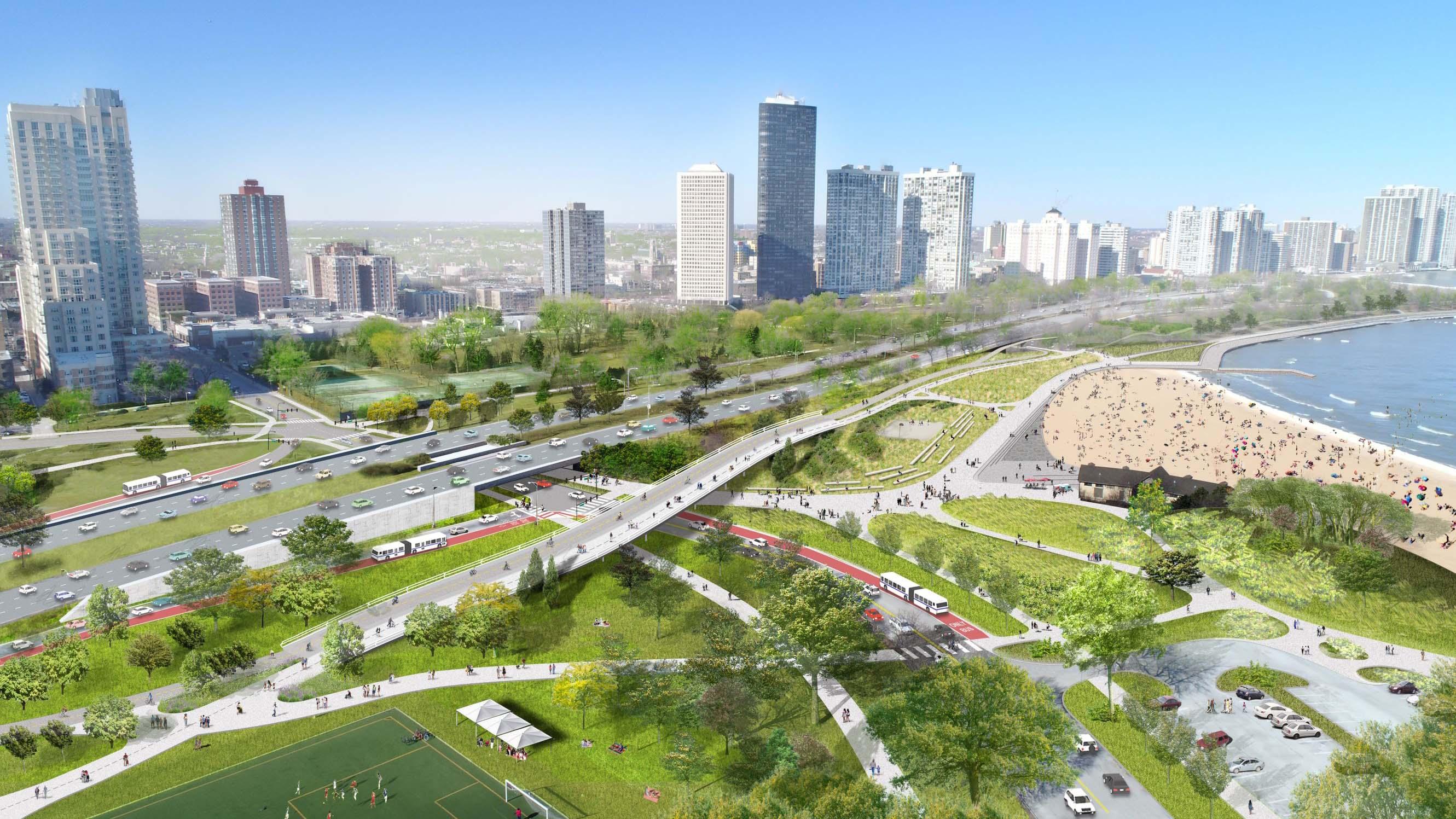 (Courtesy Redefine the Drive)
(Courtesy Redefine the Drive)
“And none of that taking away from access for cars,” Lucas said, “but we think that the data suggests that if we were to actually invest in alternative modes for transportation, we’d need way less space for cars on the lakefront. We could dramatically reduce the footprint of the road and create more park space for people to enjoy.”
Kate Lowe of UIC worries about focusing too much on congestion, since transportation is the biggest contributor to greenhouse gases in the U.S. “We should instead have reducing vehicle miles traveled be one of the primary motivating factors,” Lowe said.
While she appreciates that improving transit is one of the goals, she says that, “...at the heart of it, it’s about enabling auto commutes during the peak hour. Peak hour downtown commuters are disproportionately affluent, so this project would speed their commutes and not address the transit deserts on the South and West sides.”
For their part, IDOT and CDOT say the project is multi-modal, focused on the future, and an effort to balance a lot of different interests.
“Everyone loves Lake Shore Drive, but they love it for different reasons, and so that’s something that we’ve definitely tried to weave into our design,” said CDOT’s Roseberry.
Public comment on the five proposed designs is open through Nov. 9. Click here for more on the potential redesigns and to send your input on the project.

